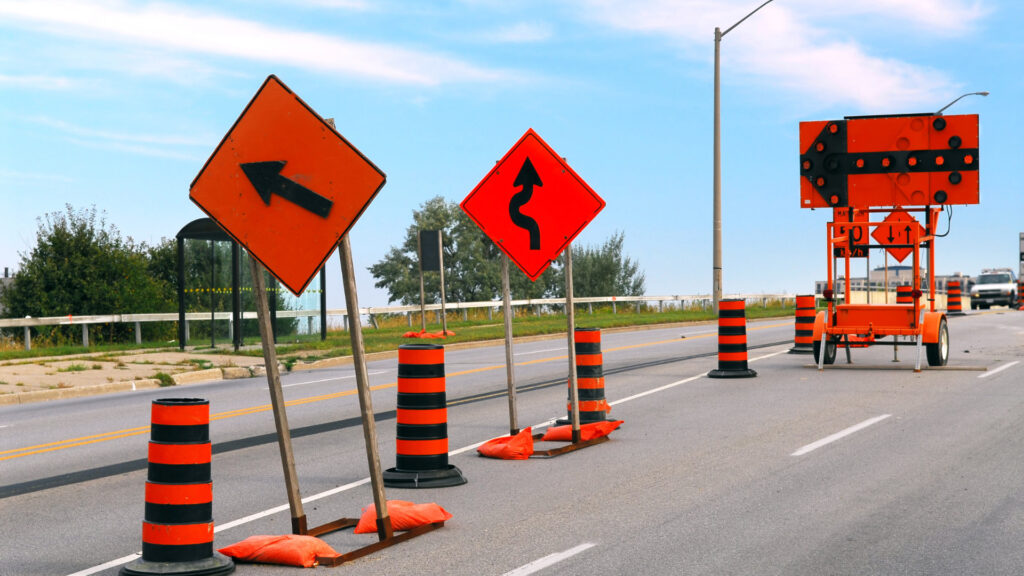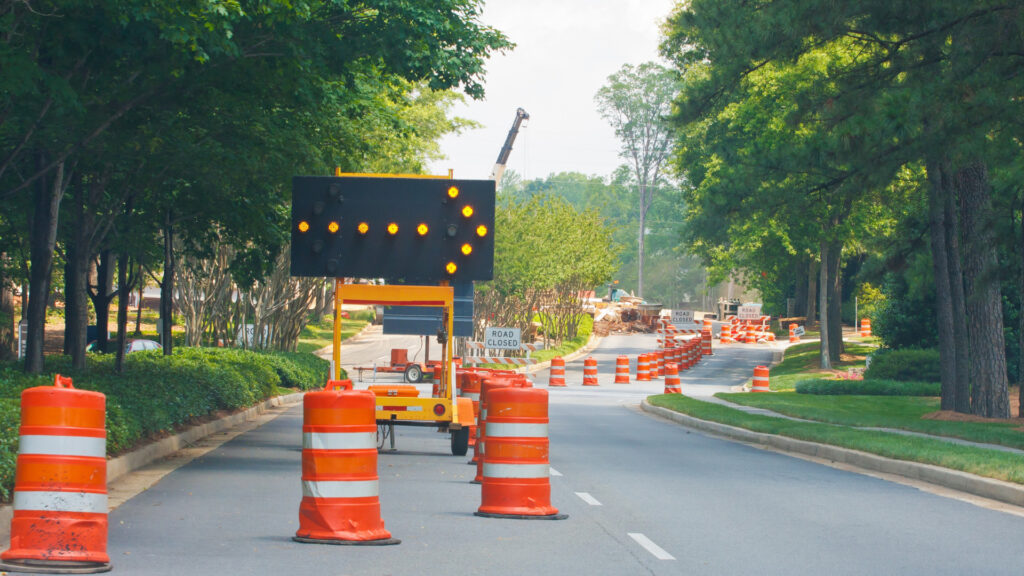Table of Contents Show
Do you know how to do a zipper merge? It has happened many times. You’re driving along the interstate and see a sign for construction ahead.
Flashing lights indicate that traffic will merge to a single lane. As you approach the construction zone, you see a long line of drivers who have already merged. But the left lane is still wide open.
Is it okay to zip over and pass all these drivers until you reach the merge area? Or are you supposed to politely stay in line?
Let’s talk about a zipper merge — what it is and how to do it — so the next time you find yourself in this situation, you’ll know what to do!
What Is a Zipper Merge?
A zipper merge is when drivers use both lanes of traffic up until the actual merge location. Then right before the single lane, each driver merges into the open lane, alternating in a zipper pattern.
Instead of having one single lane backed up for miles, drivers wait to join until it’s necessary. Following this traffic pattern allows for a more smooth flow of traffic.
How Is a Zipper Merge Different From an Early Merge?
On the other hand, an early merge is when you get into the open lane very early. Instead of using both lanes until the construction zone appears, drivers immediately get over as soon as they see a “lane closed ahead” sign. This is when traffic gets backed up and can cause accidents.
Instead, you should continue driving in both lanes. Although it may seem impolite, it’s much safer when drivers use the zipper merge to smoothly take turns getting into the open lane at the point of the lane closure.
Is a Zipper Merge Faster Than an Early Merge?
A zipper merge keeps traffic flowing steadily, so it’s a better and safer way to merge. An early merge will create a backup and often completely stalls traffic.
Research shows that a zipper merge is a more efficient way to merge in heavy traffic because it uses all available road space for as long as possible.
What Are the Benefits of a Zipper Merge?
We’ve already mentioned that a zipper merge will help reduce congestion. By driving in all available lanes until the merge location, drivers can keep the traffic flowing and reduce back-ups.
Another benefit to this type of merge is that it maintains the appropriate highway speed for as long as possible. Drivers in all lanes can continue to drive at the same rate when they follow the zipper merge recommendation.
On the other hand, when drivers merge too early, that lane gets backed up, and drivers have to slow down or even come to a complete stop.
Drivers in the other lane continue to zip passed at a higher speed. This creates a dangerous situation, especially if one car decides to switch lanes from a slow pace and a faster driver zooms quickly behind them.
Keep in Mind: Have You Driven the Most Dangerous Highway in the US? Click the link to find out!
Is a Zipper Merge Cutting in Line?
Although it may seem impolite to zipper merge, it’s the safest and most efficient way to merge. It is not cutting in line.
In fact, if everyone followed the zipper merge recommendation, it’s more fair because all drivers would get their turn to go one after another. They can also maintain their speeds and continue down the road until they alternate to merge at the appropriate time.
If you think you’re being courteous by immediately moving over as soon as you see a warning sign, you’re actually becoming part of the problem and adding to the congestion on the highway.

Do I Ever Avoid a Zipper Merge?
Yes, there are times when you don’t need to zipper merge.
If you look ahead and see very little traffic with no back-ups, you can move over into the lane that will remain open as it won’t impede any traffic. You won’t need to zipper merge because there won’t be other drivers to alternate with at the intersecting point.
If traffic moves at the regular speed, you can merge safely. But if you see congestion or a long line starting to form, remain in your lane so you can zipper in later.
Keep in Mind: Have you heard of the Move Over law? You might be breaking this law every time you drive!
How to Safely Change Lanes and Merge in Traffic
When you learned how to drive, your driver’s ed teacher probably taught you how to parallel park, enter a four-way stop safely, and change lanes properly. But when traveling at high speeds in heavy traffic, you may sometimes forget what we learned so long ago.
When it’s time to change lanes, maintain your speed for as long as possible. Don’t slow the traffic flow. Turn on your turn signal to let other drivers know your intentions.
As you approach the merge location, look for an opening between vehicles in the open lane. Make sure to constantly check your blind spot and mirrors before merging. Turn off your turn signal once you safely join.
Problems occur when people don’t use their turn signal, don’t check their blind spot, and slow down way too early. Don’t zip in front of another vehicle without first letting the driver know.
In heavy traffic, checking your blind spot is critical. Other drivers move in and out of traffic, too, so staying alert’s important. Finally, slowing down only causes congestion. It leads to a chain reaction that can cause accidents.

Next Time You See a Merge Sign, Do the Zipper Merge to Keep Traffic Flowing
So the next time you encounter a construction zone where traffic merges into a single lane, do the zipper merge.
Don’t worry about what other drivers think as you pass them. What you’re doing is the safest and most efficient way to merge. It keeps the traffic flowing and reduces congestion.
Have you ever felt irritated when another driver stayed in the closed lane and then zipped into the open lane at the last minute? Now you understand that it’s actually the best way to merge!







I wish the signs would have more instructions along the road construction zone that state “Use the ziipper merge”. That way other drivers in line would not get frustrated ir feel slighted.
Yay for this!!! I once read an article that describes how ants get back into an ant hill quickly: they zipper merge! I’ve long wished that people could be as smart as ants when merging. Thank you!